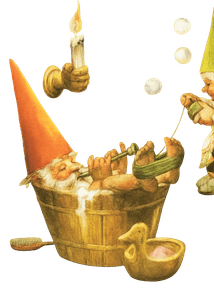
Butterfly Pea (Clitoria ternatea) Extract 30 ml
15,00 €
Ingredients: 1:1 Organic Alcohol, Guayusa dried leaves.
NO additives, colouring, added sugar, gluten, soy or GMOs.
Keywords: Antioxidant and anti inflammatory, brain boost, improve eye sight, reproductive health, blood sugar levels, skin health, strengthen hair, respiratory health, collagen, transformation
Energetics: Neutral
The esoteric qualities of Butterfly Pea tea make it an ideal choice for ritual practices. We like to use this tea in a transformative healing meditation. To begin, set a clear intention. Then, pour boiling water over the tea and watch intentionally as the water turns into a deep blue. Sit with the cup, reflecting on aspects of your life or yourself that you may wish to transform. Take a moment to offer gratitude for the role these things have played in your life and the lessons they have taught you.
Next, squeeze some lemon into your tea and watch as the color changes. As the tea shifts from blue to purple, envision the drink as a reflection of your spiritual state. With each color transformation, imagine yourself also changing, becoming the person you desire to be.
Dosage
- Intervention: 20 drops per day.
- Treatment: 20 drops, 3 times per day (max).
Directions for Use
Shake well before use. Take directly on the tongue or mix into a half glass of water or tea, 15 to 30 minutes before meals.
For long-term treatment, use 6 days out of 7.
Mode of Action
Butterfly Pea flowers are exceptionally rich in antioxidant compounds known as ternatins. These compounds not only give the tea its vibrant color but have also been shown to reduce inflammation and inhibit the growth of cancer cells. The flowers are also packed with other healing antioxidants, including kaempferol, which is known for fighting cancer cells; p-coumaric acid, recognized for its anti-inflammatory, antimicrobial, and antiviral properties; and delphinidin-3,5-glucoside, which helps boost immune function and combat cancer cells. The presence of these antioxidants provides a wide range of health benefits.
Helpful Associations
- Om Shrooms (available at Blissdorf)
- Rosemary (available at Blissdorf)
- Blue Lotus (available at Blissdorf)
Ethnobotany
Traditionally, the Butterfly Pea flower is ruled by the planet Venus and connected to the element of water, which imbues it with qualities of love, emotion, serenity, and protection. In India, the flower is named after the Hindu goddess Aparajita, meaning "one who cannot be conquered or defeated." It is commonly offered during Puja rituals—daily ceremonies of ceremonial worship, which typically include a brief offering to a deity.
In Thailand, this drink is called Anchan tea. Thai folklore recounts the story of a woman named Isra, who was taken on an adventure by a half-woman, half-bird creature called a Kinnari. The Kinnari showed her the Butterfly Pea flowers and instructed her to cultivate them for healing. While the flower is rich in history and mythology, it has gained worldwide popularity primarily for its color-changing properties.
History
Ancient communities used the Butterfly Pea flower for its health benefits and beautifying properties. Today, it holds various meanings in different cultures. In Thailand, the story behind the tea tells of a woman named Isra, who was taken on an adventure by a half-woman, half-bird creature called a Kinnari. The Kinnari presented her with the flowers, instructing her to cultivate and use them for healing.
The cultural significance of the Butterfly Pea flower extends beyond traditional medicine and drinks. In Thailand, it is used to make "Khanom Chan," a multi-layered, colorful dessert made with rice flour, coconut milk, and Butterfly Pea flower juice. The dessert is often served at weddings and other celebrations and is considered a symbol of good luck and prosperity. Additionally, the Butterfly Pea flower has been used as a natural dye for textiles and clothing in Southeast Asian countries.
Contra-Indications
None to note.
Interactions
None to note.







